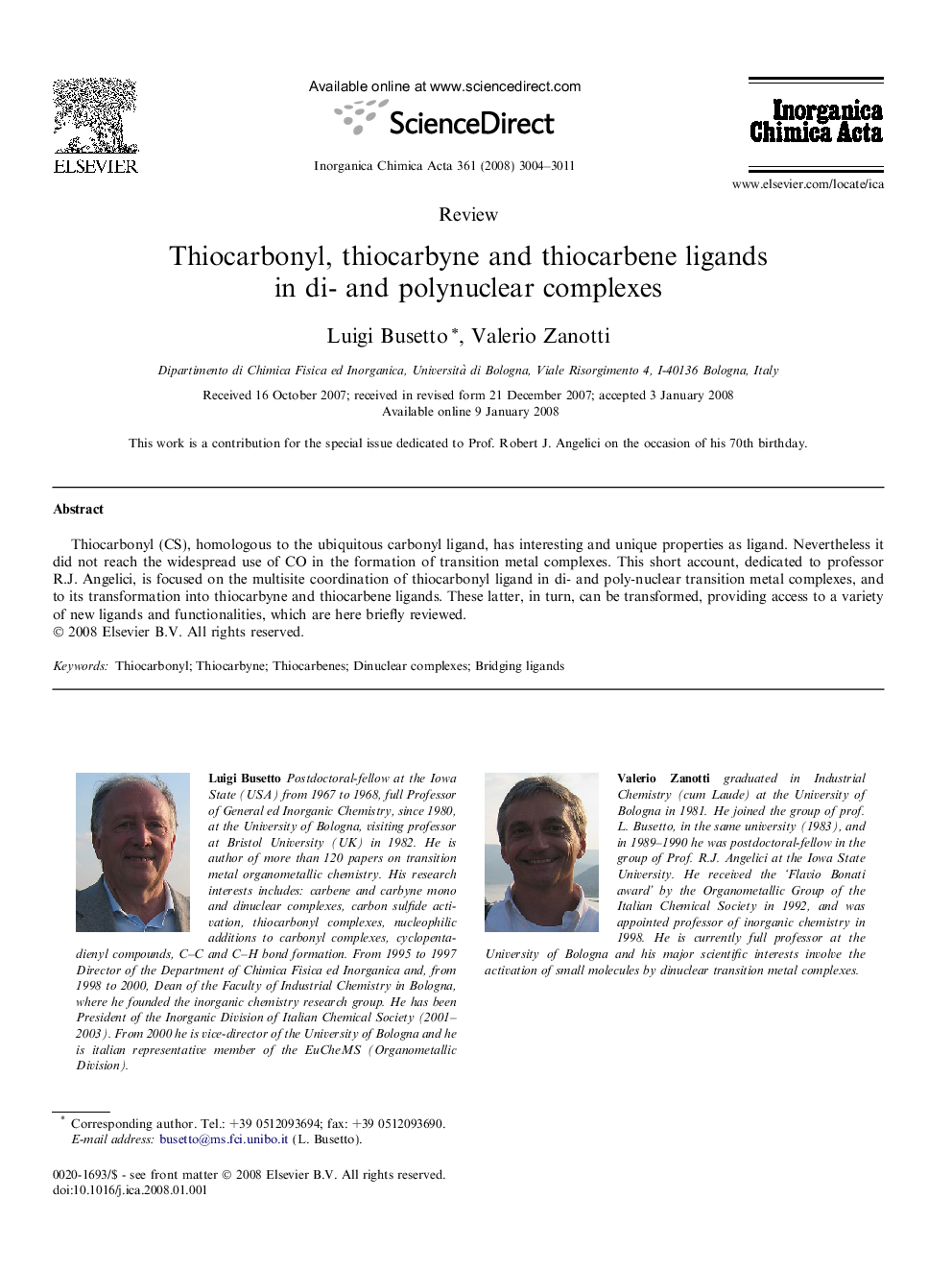| Article ID | Journal | Published Year | Pages | File Type |
|---|---|---|---|---|
| 1311568 | Inorganica Chimica Acta | 2008 | 8 Pages |
Thiocarbonyl (CS), homologous to the ubiquitous carbonyl ligand, has interesting and unique properties as ligand. Nevertheless it did not reach the widespread use of CO in the formation of transition metal complexes. This short account, dedicated to professor R.J. Angelici, is focused on the multisite coordination of thiocarbonyl ligand in di- and poly-nuclear transition metal complexes, and to its transformation into thiocarbyne and thiocarbene ligands. These latter, in turn, can be transformed, providing access to a variety of new ligands and functionalities, which are here briefly reviewed.
Graphical abstractBridging thiocarbonyl ligands display reactivity patterns distinct from those of mononuclear complexes. In particular, dinuclear thiocarbonyl complexes (e.g. 1) can be easily transformed, upon methylation of the S atom, into μ-thiocarbyne complexes (e.g. 11). These latter undergo a variety of reactions and possible transformations including addition of nucleophiles to form thiocarbene ligands (e.g. 16), coupling with olefins and insertion reactions, providing access to novel bridging ligands.Figure optionsDownload full-size imageDownload as PowerPoint slide
